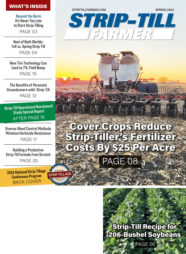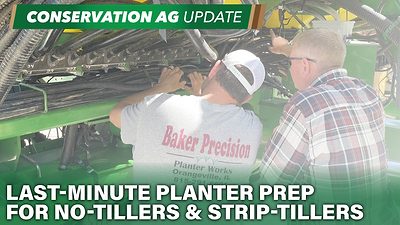By Bonnie Coblentz, Senior Extension Associate
Knowing when to treat for insect pests in crops is vital to keeping yields high and controlling the costs of agricultural production.
Every year, the Mississippi State University Extension Service updates and publishes its “Insect Control Guide for Agronomic Crops.” The guide includes recommendations for nine crops, including the major row crops, as well as sweet potatoes and pastures.
Angus Catchot, MSU Extension Service entomologist, said all the recommendations in the insect control guide are based on research and tested in the field.
“This guide is a joint effort between all the entomologists at MSU and the commodity specialists,” he says. “We’re trying to give farmers advice on managing specific insects for a particular row crop. The guide gives control options and information that helps them know if, in fact, they need to make pesticide application for a specific insect.”
Ongoing research is focused on validating these recommendations based on current farming and management practices. When a recommendation is changed, it is the result of years of study and field tests.
“In 2015, we had 5 years of research on Southwestern corn borers in corn, and we were able to compile that and come up with a new threshold for treatment,” Catchot says.
“Another good example is the 3-year, multistate project we did with the Soybean Promotion Board to examine corn earworms in soybeans. As a result of that research, we were able to set a dynamic threshold based on the cost of the insecticide being applied and crop value.”
Each year, many changes in the MSU recommendations are announced at the Row Crops Short Course held each December for producers, crop consultants and Extension agents.
Don Cook, Mississippi Agricultural and Forestry Experiment Station and MSU Extension entomologist at the Delta Research and Extension Center in Stoneville, says it does not make economic sense to spray for some soybean pests.
For example, insecticide applications are not as effective with Dectes stem borers and the damage they cause a plant does not always result in yield losses.
“Dectes stem borers tunnel in the main stems of soybean plants. This damage does not cause yield loss but can result in lodging [which causes plants to bend and fall over],” Cook says. “Yield loss can occur if the plants lodge and the combine can’t pick them up. If scouting indicates high levels of tunneled main stems, particularly in the lower part of the main stem, get in there and harvest as quickly as you can.”
Alfalfa hoppers can show up in very large numbers after soybean flowering, but Cook says researchers have not identified any yield losses from these insects during the crop’s reproductive growth stages, even with very high infestations of the pest. Researchers revised their recommendation and now suggest reduced spraying for Alfalfa hoppers during this soybean growth stage.
Caterpillars can be a big problem in soybeans. However, when soybeans are planted early, caterpillars usually arrive when plants have become less susceptible to damage, Cook says.
“Up to the R4 development stage [the reproductive stage when soybean pods are reaching full development], you can remove half the fruiting structures and not impact yield,” he says.
Bean leaf beetles are defoliators, and Cook says MSU scientists made a fairly significant change to recommendations on how to handle this pest.
“We’ve taken out the insect count component of the threshold because it takes a while for this insect to cause 20% defoliationsays which is the treatment threshold for defoliation after the beginning of flowering,” he said.
Jeff Gore, Experiment Station research entomologist and MSU Extension specialist in Stoneville, says insecticides remain the most important component of managing plant bugs in cotton, but variety selection can help.
He said one of the most effective insecticide spraying strategies seems counterproductive.
“We can spray less when we spray the second application sooner,” Gore says. “If we spray the second application 4-5 days after the first application, we can wait a lot longer until we have to make that third application.”
Before 2010, insect control recommendations for rice and peanut were based on information from other states.
“Since that time, we have had a focused research effort on evaluating and revising those thresholds specifically for Mississippi’s production systems,” Gore says. “We have already changed the threshold for rice stink bug in rice, and we are working on other management strategies in both rice and peanut. Those research results will be important for refining our insect pest management recommendations in those crops.”
These and other insect control recommendations are found in the “2016 Insect Control Guide for Agronomic Crops” available for free online.






Post a comment
Report Abusive Comment